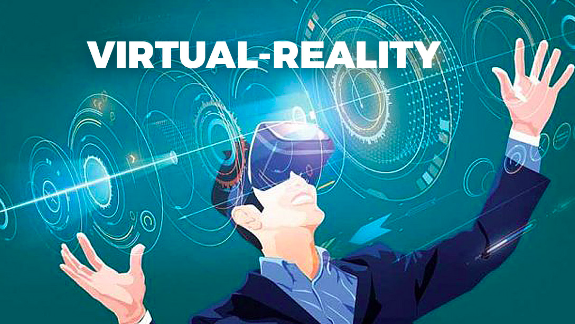The Future of Virtual Reality Technology: VR
"Since its inception, Virtual Reality (VR) has made significant strides and holds immense potential for transforming numerous industries, including gaming, entertainment, healthcare, and education. With ongoing technological advancements, the future of virtual reality appears incredibly promising

Introduction
Virtual Reality (VR) has come a long way since its inception and has the potential to revolutionize various industries, from gaming and entertainment to healthcare and education. As technology continues to advance, the future of virtual reality looks promising. In this article, we will explore the exciting possibilities and advancements in virtual reality technology that we can expect to see in the coming years.

VR Hardware Advancements
Virtual reality hardware has undergone significant improvements in recent years, and this trend is expected to continue. Here are some key advancements we can anticipate:
1. Higher Resolution Displays
Resolution plays a crucial role in the immersive experience of virtual reality. As display technology advances, we can expect VR headsets to feature higher-resolution displays, reducing the screen door effect and enhancing image clarity.
2. Improved Field of View

Expanding the field of view is another area of focus for VR hardware manufacturers. A wider field of view provides a more immersive experience, making users feel like they are truly present in the virtual environment. Future VR headsets are likely to offer a wider field of view, increasing the sense of realism.
3. Wireless Connectivity
Current VR setups often require wires for connection, which can be cumbersome and limit movement. However, wireless connectivity is becoming more prevalent in VR technology. Future advancements are expected to offer seamless wireless connectivity, providing users with more freedom and flexibility during VR experiences.
4. Lightweight and Comfortable Designs
Comfort is essential for the prolonged use of VR headsets. Manufacturers are continuously striving to create lightweight and ergonomic designs that are comfortable to wear for extended periods. Advancements in materials and design techniques will likely result in more comfortable and user-friendly VR headsets.

VR Content and Applications
While VR hardware is crucial, the content and applications available for virtual reality are equally important. Here are some exciting developments in VR content and applications:
1. Gaming and Entertainment
The gaming industry has been at the forefront of VR adoption and will continue to drive innovation in virtual reality experiences. We can expect more immersive and realistic gaming experiences as developers leverage the capabilities of advanced VR hardware. Additionally, VR technology will likely expand beyond gaming to offer immersive experiences in movies, concerts, and other forms of entertainment.

2. Virtual Travel and Tourism
Virtual reality has the potential to transform the way we explore and experience travel destinations. With VR, users can virtually visit exotic locations, historical sites, and landmarks from their homes. This opens up new possibilities for virtual tourism, allowing individuals to have immersive travel experiences and make informed decisions about their future trips.
3. Training and Education
Virtual reality has already shown great promise in the field of training and education. It provides a safe and controlled environment for learners to practice and acquire new skills. In the future, we can expect to see virtual reality being widely adopted in various educational settings, such as medical training, flight simulations, and vocational training programs.
4. Healthcare and Therapy
Virtual reality has proven to be effective in healthcare and therapy applications, such as pain management, rehabilitation, and mental health treatments. As technology advances, VR can play an even larger role in healthcare, offering more sophisticated simulations and personalized experiences to aid in diagnosis, treatment, and patient care.
Augmented Reality Integration
Augmented Reality (AR) is another emerging technology that complements virtual reality. While VR creates a fully immersive virtual environment, AR overlays digital information into the real world. The integration of AR and VR can lead to exciting possibilities:

1. Mixed Reality Experiences
The combination of AR and VR can create mixed reality experiences, where virtual objects and digital information are seamlessly integrated into the real world. This allows users to interact with virtual content while still being aware of their physical surroundings. Mixed reality has the potential to transform industries such as architecture, design, and engineering by enabling real-time collaboration and visualization.
2. Enhanced Interactions
AR integration in VR can enhance user interactions by overlaying virtual controls and interfaces onto the physical world. This makes interactions more intuitive and natural, reducing the learning curve for new VR users and expanding the possibilities for complex interactions in virtual environments.
3. Real-World Context
AR integration brings real-world context into virtual reality experiences. Users can leverage real-time data, such as location-based information or live video feeds, to enhance their virtual experiences. This integration can lead to innovative applications in areas such as navigation, remote assistance, and real-time data visualization.
H2: Challenges and Considerations
While the future of virtual reality holds immense potential, there are still challenges and considerations to address:
1. Accessibility and Affordability

For virtual reality to reach its full potential, it needs to be accessible and affordable to a broader audience. As technology advances, we can expect costs to decrease, making VR more accessible to consumers. Furthermore, advancements in cloud computing and streaming technologies may reduce the hardware requirements, enabling VR experiences on lower-end devices.
2. User Comfort and Safety
VR experiences can cause discomfort or motion sickness for some individuals. Future advancements need to address these issues to ensure a comfortable and safe user experience. Additionally, user safety in virtual reality environments should be carefully considered to avoid accidents or injuries.
3. Ethical and Privacy Concerns
As VR becomes more immersive and realistic, ethical and privacy concerns may arise. Striking a balance between virtual experiences and real-world responsibilities is essential. Privacy concerns related to data collection and usage in virtual environments must also be addressed to maintain user trust.

Conclusion
The future of virtual reality technology holds immense potential for transforming various industries and delivering immersive experiences. Advancements in hardware, content, and integration with augmented reality will play a crucial role in shaping the future of VR. While challenges exist, the continued development of virtual reality technology will unlock new opportunities and revolutionize the way we work, play, learn, and interact in the digital world.




